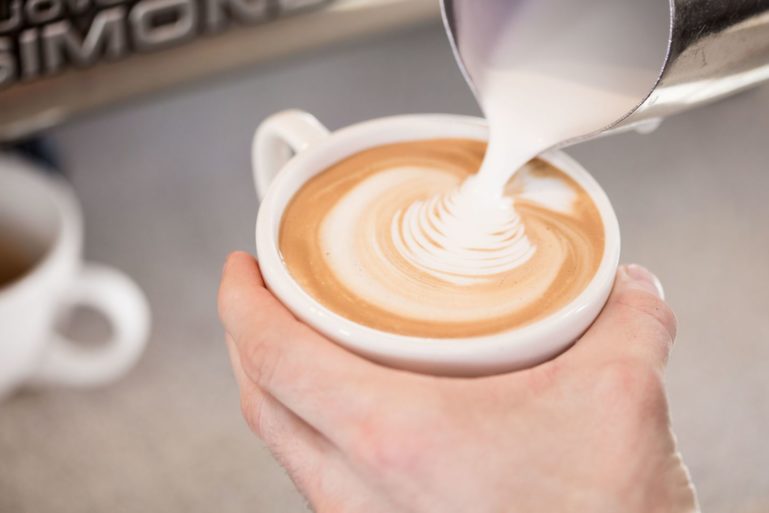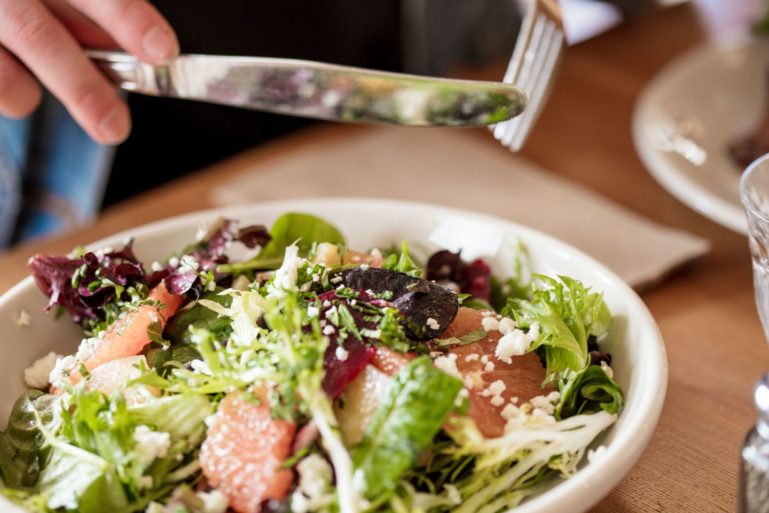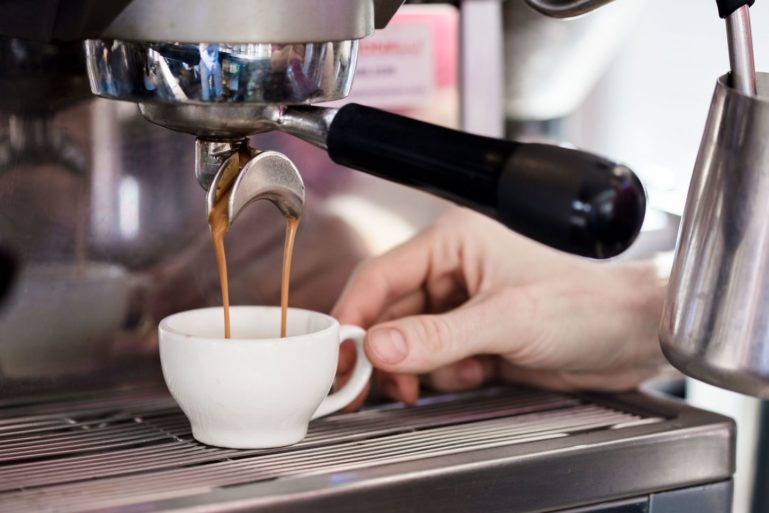
How to Calculate Food and Beverage Cost: Know Your Dough
Have you ever wondered why some restaurants list menu items at ‘market price?’
This is commonly done on some meat and seafood dishes because the wholesale price to buy the ingredients is constantly changing. A restaurant wants to keep their profit margins in a target range, even when the price of a dish fluctuates daily, leading to unpredictable pricing practices.
This is an example that highlights the importance of knowing how to calculate food and beverage cost. When you know precisely how much it’s costing you to make a dish or pour a shot of liquor, you can set prices at a level that ensures that you stay within your target profit margin for any given dish.
What Is Food Cost and Why Is It Important?
How can you ensure that your bar or restaurant is making a profit if you don’t know how much you’re spending on your products? Food and beverage cost control is one of the key ways that you can save money by knowing how much you need to sell your dishes for to maintain an optimal profit.
Not only does knowing food cost help you accurately set selling prices, but it also serves as a guide for building the menu. Is it worth using high-quality ingredients when the final product may be too expensive for the customer to order? Are your portion sizes too large to be financially feasible? How much food is being wasted in the kitchen? This guide to calculating food and beverage cost will show you how to answer these questions and more.

What Factors to Consider
Let’s say that the wholesale price of 20 steaks is $100.00, meaning that for a single serving (one steak) your cost to prepare the dish is $5.00. Easy, right?
Not so fast. You have to dig a little deeper and find out the per-serving cost of the salt, pepper, oil, and other ingredients used to prepare the steak.
You might find yourself asking, “if we’re talking about a single portion of salt on a dish, which only costs a fraction of a cent per serving, why does it matter if I include it in my food cost calculations?” Because per serving, these costs may seem insignificant, but when you prepare that dish hundreds of times a week, the cost can quickly add up. That’s why every ingredient in the recipe, no matter how small, should factor into your food cost equations.
For the sake of simplicity, let’s say that the other ingredients used in the recipe add up to $1.00. The per-serving cost of preparing that food (disregarding labor, of course) jumped up to $6.00. This is a very simple example; most dishes won’t be so straightforward. For example, if you’re making a pasta dish, the math becomes a bit more labor intensive.
SEE ALSO: How to Manage a Restaurant Business
Let’s say your spaghetti marinara recipe is one cup of pasta and one cup of tomato sauce. First, you have to figure out the total cost of a batch of tomato sauce, using the price of the tomatoes, oil, herbs, and spices. Divide that sum by the number of one cup portions a batch makes.
For the sake of the example, let’s assume that the spices, herbs, oil, etc. adds up to $10.00 for one batch of sauce that yields 50 cups. Divide $10.00 by 50 to get $0.20 per serving for the marinara sauce.
For the pasta, take the cost of one pound of pasta at wholesale and divide that by the number of cups it takes to make the dish — in this case, one cup. Let’s say the pasta you use is handmade and costs $10 per pound. If one pound makes 10 servings, you divide $10.00 by 10 to get a per serving price of $1.00. Add that to the per serving price of the sauce and do the math:
$1.00 + $0.20 = $2.20 per-serving cost of preparing this pasta dish.
Calculating beverage cost follows the same basic logic. Add up the ingredients of making a drink, for example, a vodka cranberry. A one-ounce pour of top-shelf vodka might run you $2.00 and the few ounces of cranberry juice will be $0.50. Add the prices of all the ingredients and you’ll have the beverage cost for that cocktail — $2.50
How Can You Use Food and Beverage Costs?
It’s one thing to know your food and beverage cost, but it’s another thing to be able to apply what you’ve learned. It’s only by application that you can derive insights about your restaurant’s profitability and ensure you set optimal menu prices. Here are a few ways that you can use this knowledge.
Set Prices Based on Food and Beverage Cost Percentage
When discussing food and beverage costs, the cost percentage refers to the total revenue you’re spending on the items that you sell. Every restaurant has a target range that serves as a goal to ensure that your profit margins are large enough to stay in business, but not so large that customers can’t afford to visit your restaurant. Here’s how it works.
Beverage costs in a bar, full-service restaurant or nightclub are made up of five separate costs. In terms of percentage of sales spent on beverages, about 17 percent should be liquor, 23 to 25 percent should be bottled beer, 21 to 22 percent should be draft beer, about 30 percent should be liquor, and six to eight percent should be soft drinks. These ratios will vary depending on the type of restaurant in question, but these are the general guidelines for beverage spending.
As far as the total target percentage that beverage costs should hit, businesses with full-service bars typically shoot for around 20 percent of their total revenue.

Here’s how to set drink prices so that you don’t exceed your target percentage.
Let’s say that the vodka cranberry mentioned about costs $2.00 for the vodka and $0.50 for the juice. If you’re aiming for a 20 percent beverage cost to price the item, the formula will look like this:
cost/target percentage x 100 or in this case $2.50/20 x 100 = $12.50
The same goes for food, with a target cost percentage that varies based on the type of restaurant in question. For example, restaurants that serve high-quality ingredients usually aim for a higher food cost percentage, while fast food restaurants can usually keep their food cost percentages low.
Let’s say, for the steak example, that the business in question is a steakhouse, which can run a food cost percentage around 35 percent.
If the steak from the example (including seasonings, etc.) had a per-serving cost of $6.00 and the restaurant’s target food cost percentage is 35 percent, the calculation would look like this:
100 percent divided by 35 percent = 2.85
Multiply the cost of preparing the dish ($6.00) times 2.85 to get the menu price
$6.00 X 2.85 = $17.10. In this case, you can round up to $17.50 to clean up the price on your menu and offset and food waste.
Analyze Inefficiencies
While analyzing the actual cost of food and drinks are beneficial, so is analyzing any inefficiencies in this department. Here are a few things to take into consideration that may change the results of our previous examples.
Food waste
Even when you’ve set your menu prices so that your food costs are at your target percentage of food sales, the actual percentage can be higher than you expect. This can be due to a variety of issues, like food waste and improper serving sizes, thus highlighting the importance of studying your food costs and looking for inefficiencies on a regular basis.
Shrinkage
There is a similar concern involving beverage waste, or shrinkage. If you aiming for a 20 percent liquor cost, industry estimates suggest to multiply the cost of goods (vodka, cranberry) by 5 to achieve your 20 percent cost: $2.50 x 5 = 12.50.
However, this doesn’t account for spillage, drink theft, or over-pouring, so you’ll want to make an adjustment to the price to account for shrinkage; rather than multiplying the cost by five, multiply by six. $2.50 x 6 = $15.00, the adjusted price of your drink.
Although you won’t want to change your menu too often, it pays to re-analyze food and beverage costs regularly. One guide to food cost formulas recommends that food cost should be calculated as often as once a month due to fluctuations in the wholesale market.
SEE ALSO: 9 Food Safety Tips Every Restaurateur Must Follow
How to Keep Track of Food and Beverage Cost
The best way to keep track of food and beverage cost is to use a Point of Sale (POS) software like ShopKeep. With ShopKeep, you can easily track your Cost of Goods Sold (COGS) for every menu item so you can quickly run a report and use the COGS to help determine your food and beverage cost.
The Benefits of Knowing Food and Beverage Cost
In the short term, knowing precisely how to calculate food and beverage cost is critical when setting menu prices. In the long term, knowing these figures provide insights into how efficient your restaurant is operating, and what kind of changes — either to your prices or your policies — you need to make to correct any inefficiencies and make your business more profitable.
Want to try ShopKeep for yourself?
Just answer a few easy questions.
Need help finding the right point of sale?
Just complete the form. We’ll call you right back to explain how ShopKeep can work for you.
Hit the ground running.Sprinting, in fact!
Read our free, comprehensive guide, Small Business 101, to learn all you need to know about starting a thriving business.

